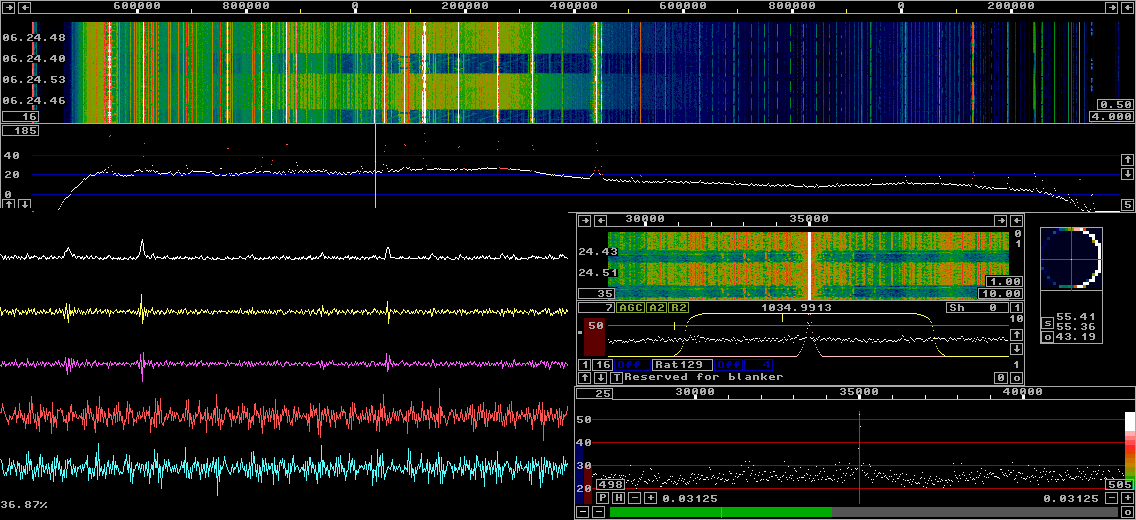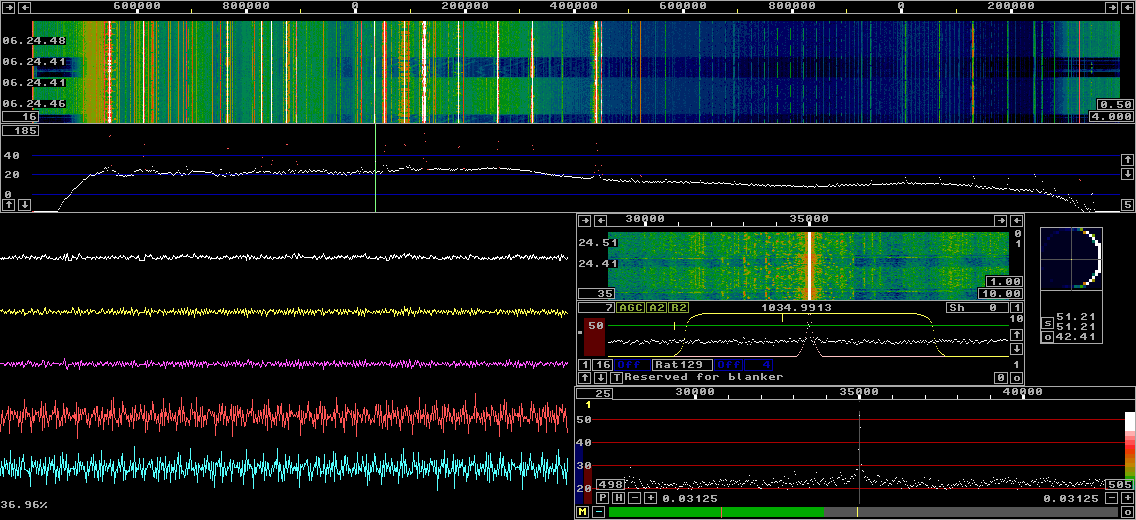
|
Figure 1 shows a 30 second recording made by Mauno Ritola
06.24 on 6th May, 2009.
The recording lasts 20 seconds and during its first half there
is pulse interference from an unknown source.
The recording is repeated twice in figure 1.
|

|
|
Fig. 1. Pulse QRM from an unknown source. No blanker.
Download this file farm-noise.zip (117011310 bytes) and unpack the .wav file (160 MB) Tartu Pereraadio on 1035 kHz is a suitable candidate for comparison of SDR softwares. With a conventional AM detector without blanker it should sound like this: nobln1035.mp3 During the first 10 seconds when the interference is on one can hear that someone is singing, but it is impossible to hear the words. Listen to 1035 kHz with perseus.exe, Winrad, Linrad and other softwares you may have and compare how well you can copy this station when the interference is on. The lower left quarter of figure 1 shows oscilloscope tracings of the entire wideband signal. The upper white trace is power vs time. The next two traces, yellow and magenta show I and Q for a signal that does not contain the spectral components that are red in the main spectrum. The bottom traces show I and Q for a signal formed by only those points in the main spectrum that are coloured red. It is obvious from the oscilloscope tracing that the pulses are not very strong. Linrad has two blankers. The smart blanker looks for pulses that have the same shape as the reference pulses with which Linrad was calibrated. Pulses with any similarity to that are not present in this recording and the smart blanker does not do anything at all. The dumb blanker simply gates out the signal at times when the power (the white oscilloscope trace) goes above a threshold value. Figure 2 shows the waterfall diagram with the dumb blanker enabled. |

|
|
Fig. 2. Pulse QRM from an unknown source.
Dumb blanker enabled.
The effect of the blanker is obvious in the oscilloscope tracings. Totally 1% of the data points are removed which means that a negligible fraction of the signal itself is lost. Removing the pulses lowers the noise floor by about 3 dB only. That is a small improvement, but is makes a difference on a weak signal as you can hear here: bln1035.mp3 The difference in S/N at the moment when the interference disappears is small. There is some QSB on this signal. That is why S/N is rather low at the beginning of the recording. The purpose of this page is to provide a reference recording for yet another interference source of pulse type. In principle it would be possible to make the smart blanker adaptive so it could recognise pulse shapes that occur often and subtract the correct one out of several different pulse shapes. SM 5 BSZ Home page Linrad home page |